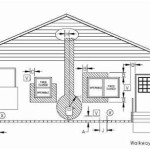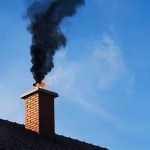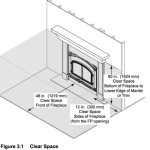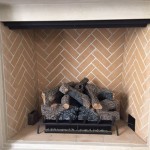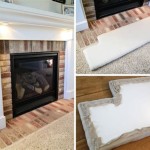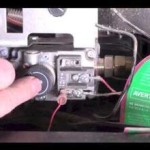Adding A Wood Burning Fireplace To Your Basement: A Comprehensive Guide
Adding a wood-burning fireplace to a basement can transform a previously underutilized space into a warm and inviting living area. This project, however, requires careful planning and adherence to building codes to ensure safety and efficiency. This article provides a detailed overview of the considerations, processes, and regulations involved in installing a wood-burning fireplace in a basement environment.
Assessing the Suitability of Your Basement
Before embarking on the installation process, a thorough assessment of the basement’s suitability is crucial. This assessment should address several key factors, including structural integrity, ventilation capabilities, and compliance with local building codes. A professional structural engineer may be needed to determine whether the existing foundation and framing can support the weight of the fireplace and chimney system. Additionally, the location of existing utilities, such as electrical wiring, plumbing, and gas lines, needs to be carefully mapped to avoid potential hazards during the installation.
Ventilation is paramount for wood-burning fireplaces. Basements, often being below ground level, may have limited natural ventilation. An adequate fresh air intake system is necessary to ensure proper combustion and prevent the buildup of carbon monoxide. This system may involve installing a dedicated air vent near the fireplace or modifying the existing HVAC system to provide sufficient air circulation. The size and design of the fresh air intake will depend on the size of the fireplace and the overall volume of the basement.
Furthermore, a detailed review of local building codes and regulations is essential. These codes often specify minimum clearances from combustible materials, chimney height requirements, and installation standards for wood-burning appliances. Failure to comply with these regulations can result in costly rework or even legal penalties. Engaging with local building officials early in the planning process can help ensure that the project meets all necessary requirements.
Selecting the Right Fireplace and Chimney System
Choosing the appropriate fireplace and chimney system is a critical step in the installation process. Several types of wood-burning fireplaces are available, including traditional masonry fireplaces, prefabricated metal fireplaces, and wood-burning fireplace inserts. Each type has its own advantages and disadvantages in terms of cost, efficiency, and installation complexity. Masonry fireplaces offer a classic aesthetic and excellent heat retention but require significant structural support and skilled masonry work. Prefabricated metal fireplaces are generally less expensive and easier to install, but they may not offer the same level of heat retention or aesthetic appeal. Wood-burning fireplace inserts are designed to be installed into existing masonry fireplaces, providing increased efficiency and cleaner burning.
The selection of the chimney system is equally important. The chimney is responsible for safely venting combustion gases out of the house and preventing dangerous carbon monoxide buildup. Chimneys can be constructed from masonry, metal, or a combination of both. Masonry chimneys are durable and aesthetically pleasing but are more expensive and require specialized construction techniques. Metal chimneys, often made of stainless steel, are lighter and easier to install but may not have the same lifespan as masonry chimneys. The chimney must be properly sized to match the fireplace's flue outlet and meet local building code requirements for height and clearance from combustible materials. A professional chimney sweep can help determine the appropriate chimney size and design for a specific fireplace.
The design and construction of the chimney must also consider the potential for condensation. Wood-burning fireplaces produce water vapor as a byproduct of combustion, and this vapor can condense inside the chimney, leading to corrosion and reduced efficiency. To mitigate this issue, insulated chimney liners are often used to keep the flue gases warm and prevent condensation. Regular chimney inspections and cleaning are also essential to maintain the chimney’s integrity and prevent dangerous flue fires.
Installation Procedures and Safety Considerations
The installation of a wood-burning fireplace in a basement is a complex undertaking that should ideally be performed by qualified professionals. The process typically involves several stages, including preparing the site, constructing the fireplace and chimney, installing the ventilation system, and completing the necessary electrical and plumbing connections.
Site preparation involves clearing the area around the fireplace location and ensuring that the floor can support the weight of the fireplace and chimney. If the floor is not strong enough, it may be necessary to reinforce it with additional supports. The area around the fireplace must also be protected from heat and sparks. Non-combustible materials, such as concrete or stone, should be used to create a hearth that extends beyond the fireplace opening. Walls near the fireplace should also be protected with heat-resistant materials, such as fire-rated drywall or stone cladding.
The construction of the fireplace and chimney must adhere to strict building code requirements. For masonry fireplaces, this involves laying bricks or stones in a specific pattern and ensuring proper mortar joints. For prefabricated metal fireplaces, the manufacturer's instructions must be followed carefully. The chimney must be properly supported and connected to the fireplace flue outlet. The chimney must also extend high enough above the roofline to ensure adequate draft and prevent downdrafts. In areas with heavy snowfall, the chimney may need to be even taller to prevent it from being blocked by snowdrifts.
Installing the ventilation system is crucial for maintaining good air quality and preventing carbon monoxide buildup. A dedicated fresh air intake vent should be installed near the fireplace to provide a constant supply of fresh air for combustion. The size of the vent should be determined based on the size of the fireplace and the volume of the basement. Carbon monoxide detectors should also be installed in the basement and on every level of the house to provide early warning of dangerous carbon monoxide levels. Regular maintenance, including chimney cleaning and inspection, is essential to ensure the fireplace operates safely and efficiently. A professional chimney sweep should be hired to inspect and clean the chimney at least once a year.
Safety is paramount during the operation of a wood-burning fireplace. Never leave a fire unattended and always use a fire screen to prevent sparks from escaping the fireplace. Store firewood away from the fireplace and never use flammable liquids to start a fire. Dispose of ashes properly by placing them in a metal container with a tight-fitting lid and keeping them away from combustible materials. Educate all household members about the safe operation of the fireplace and the importance of having working smoke and carbon monoxide detectors.
Adding a wood-burning fireplace to a basement can increase the property value and create a cozy living space. However, it is important to recognize the complexities involved and prioritize safety throughout the planning and installation process. Consulting with qualified professionals, adhering to building codes, and implementing proper safety measures are essential for ensuring a successful and enjoyable fireplace experience.

How To Install A Wood Stove In The Basement 2024 Forestry Reviews

Factors To Consider Before Installing A Fireplace In Your Basement Elkstone Basements

Fireplace In Basement 101 Everything Homeowners Must Know

How To Install A Wood Stove In The Basement 2024 Forestry Reviews

Options To Keep Your Basement Warm All Winter Cressy Door Fireplace

The Pros And Cons Of Basement Fireplace Options Chimney Sweeps Repairs Installations

How To Install A Wood Burning Fireplace Insert This Old House

How To Install A Wood Stove In The Basement 2024 Forestry Reviews

Fireplace Insert Guide Fireplaces Direct Learning Center

Basement Fireplace Problems Full Service Chimney
Related Posts


